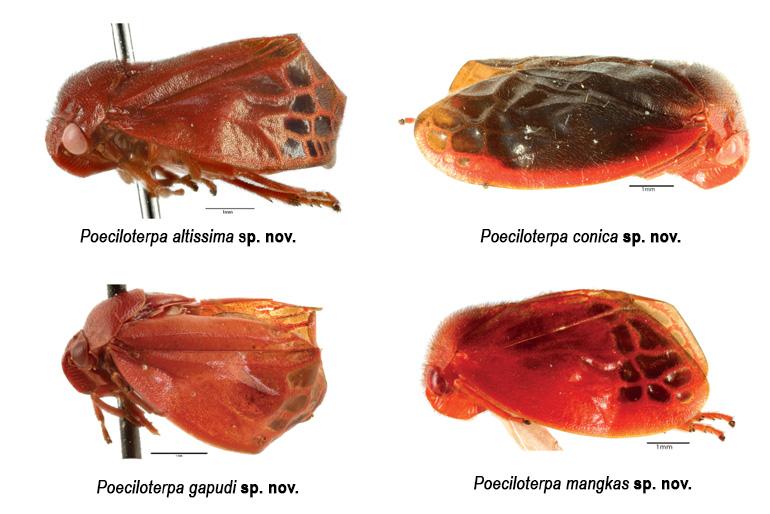2 new bugs found at foot of Mt. Kanlaon in Negros Occidental

The photos of the newly discovered spittlebugs posted on the University of the Philippines Los Baños (UPLB) website.
BACOLOD CITY –– Two of the four new spittlebugs species have been discovered in La Carlota City in Negros Occidental.
Elorde Crispolon Jr., a graduate student at the Paris-based Muséum National D’histoire Naturelle (National Museum of Natural History), named the two new species found at the foot of Mt. Kanlaon in La Carlota City as Poeciloterpa conica and Poeciloterpa mangkas.
The old name of La Carlota City is Mangkas, he said.
Crispolon – lead author of the study, with Dr. Sheryl A. Yap, curator at the University of the Philippines Museum of Natural History and Adeline Soulier-Perkins of the Paris-based Museum National d’Histoire Naturelle, said they reviewed the list of froghoppers belonging to Poeciloterpa and have been able to describe four new species.
The two other spittlebugs found in Mindanao are the P. altissima found in Mt. Apo on the North Cotabato side and the P. gapudi found in Mt. Kitanlad, Bukidnon.
Article continues after this advertisementCrispolon, a faculty member of the University of Southern Mindanao, said he began his research on the spittlebugs while obtaining his Master of Science in Entomology (Taxonomy and Systematics) at the University of the Philippines Los Baños (UPLB) and pursued it while doing his doctoral studies at the Muséum National d’Histoire Naturelle.
Article continues after this advertisementThe notable thing about froghoppers is that their nymphs, also called ‘spittlebugs,’ produce a spit-like substance, he said.
So if one comes across frothy slime smeared on vegetation that looks like human spit, it could be the secretion of a sap-feeding cercopid called a froghopper.
“Cercopids are a big family of tiny hemipterans, an insect group which has wings that are part tough and hard, part membranous,” Yap explained in an article published on the UPLB website last June 7.
“Adult froghoppers can jump high and far, many times their height and length. Hence, the reference to their common name,” she added.
But one notable thing about froghoppers is that their nymphs, also called ‘spittlebugs,’ produce a spit-like substance.
“The foam is not actually spittle, but a sticky bubbly mass produced by the froghopper nymphs by pumping air from their abdomen into the urine they have just expelled. Scientists say the spittlebugs cover themselves with the froth as some form of protection against predators and extreme temperatures,” the UPLB report said.
The family Cercopidae has around 1,500 species that have been named and described but studies indicate that the group is still one of the most neglected and unexplored.
In the Philippines, 67 species of cercopids, belonging to 18 genera, have been found. Some of these genera are endemic to the country, it said.
“The genus Poeciloterpa Stål, 1870, which is the focus of our work, has been found only in the islands of Luzon, Mindanao, Negros, Panay, and Polillo,” Crispolon, one of Yap’s graduate mentees, said.